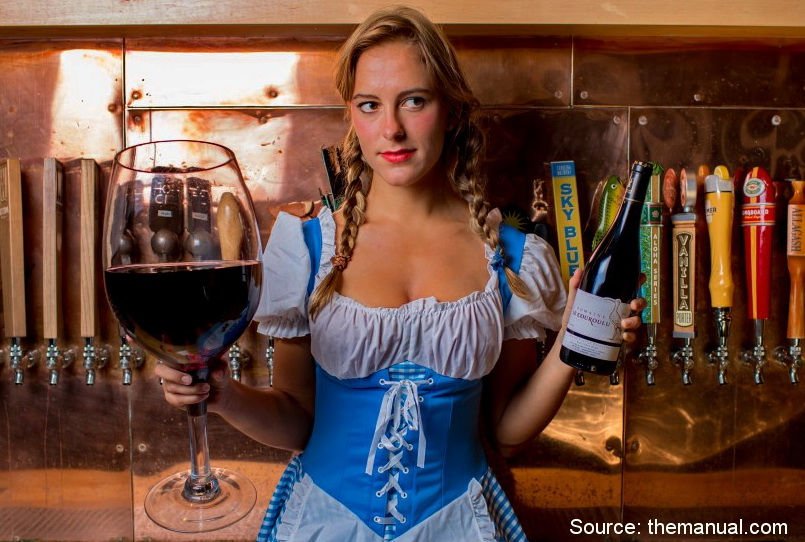We’ve long argued that wine tasting, reviewing and judging are flawed disciplines. So we review wines over a couple of days, with and without food – does that make our scores more reliable? No. Wine judging is is subject to a handful of factors that have a major impact on our perception:
- Our personal preferences, biases and blindspots
- The location, the space, the ‘comfort zone’, the temperature of the wine
- The people we’re tasting with, the glassware used, the bread and cheese provided
- Our mood at the time, the kind of day we had, what we’re looking forward to …
- The clothes we’re wearing (are the pants too tight, are then new shoes hurting?)
You get the idea. We can measure alcohol, sugar, tannin, acid, phenolics and chemicals in a wine with great accuracy, but that’s about the extent of objective assessment. The rest comes down to the individual’s ability to taste wine, and to find suitable words to describe the experience.
Then there’s fashion. Yes, wine is a fashion business like most others: varieties come and go, styles go into and out of favour … Take Chardonnay as an example: In the eighties, the judges gave the gongs to rich, blousy, buttery Jane Mansfield styles, in the nineties they seemed to favour less fruit and more oak, and in the naughties they switched to grapefruit cocktails of Twiggy proportions.
For most consumers, drinkability is a far more meaningful measure than the overall point score. It’s a terrible word, I know, and even in Italian it doesn’t sound much better – bevebilita. In simple terms, it’s the wine at the dinner table everyone wants more of, the wine that slips down the hatch like a little Jesus in velvet pantaloons, ‘comme l’enfant Jesus en culottes de velour’ as they say in Burgundy.
Some reviewers talk about a wine being ‘slurpable’. That’s another awkward word but we know exactly what they mean: you’d be happy to sit there for a while just sipping this particular wine. Here’s the rub: the wine that everyone at the table or BBQ wants more of is rarely the wine that gets the highest score from the judges.
How so? Because judges and reviewers look at the wine in a different context and from a different perspective. They also look at factors beyond what the wine shows at that moment – wine futures so to speak. If you’re tasting a young vintage of Grange, you want to make sure it has the staying power to last and improve for several decades. Grange helps us make the point: even when released at 5 years of age, it’s not a crowd pleaser, nor is it meant to be.
This was demonstrated last year when a bunch of consumers were presented with the 100 point-scoring 2008 Grange and a few much cheaper wines at a blind tasting, and consumers preferred a $17 red. More here: Penfolds Grange 2008 matched by Robert Oatley 2011 McLaren Vale Shiraz. The Robert Oatley Shiraz 2011 was a simple wine but it had ripe fruit, a touch of polished oak and that soft, round, velvety mouth feel. In short, it slipped down the hatch like a little Jesus in velvet pants.
Crowd Pleaser Ranking
The question is: how do we score this quality? A wine writer at Snooth came up with a complicated model that merged a drinkability score with the standard 100-point score. That’ll just confuse people more, so I’d suggest we leave the standard score and add a second one, but we need a better word than drinkability.
Let’s call the second number the Crowd Pleaser Ranking – CPR, and let’s keep it simple with 10 point scale: the Robert Oatley Shiraz above had a CPR of 9, the Grange more likely 4 to 5. Another example: a young Riesling’s limes, minerals and fine acid backbone may rate well with the judges and connoisseurs, but a rich, round commercial Chardonnay will have a much higher CPR.
Another key factor for the CPR number is how well a wine works with food. That’s how most most of us drink wine, after all. Common examples for this are Italian and Spanish wines with strong rustic characters, which may not look like positive attributes in a tasting but make a great complement to the right foods: tempranillo and tapas for example, or a bone-dry Italian white that cleans up oily foods.
How do we arrive at the CPR number? It will be a subjective assessment, supported by feedback from family and friends at the lunch or dinner table. This is a work in progress, so we’ll do some fine-tuning as we go, and we’re open to your suggestions as usual.
Kim
